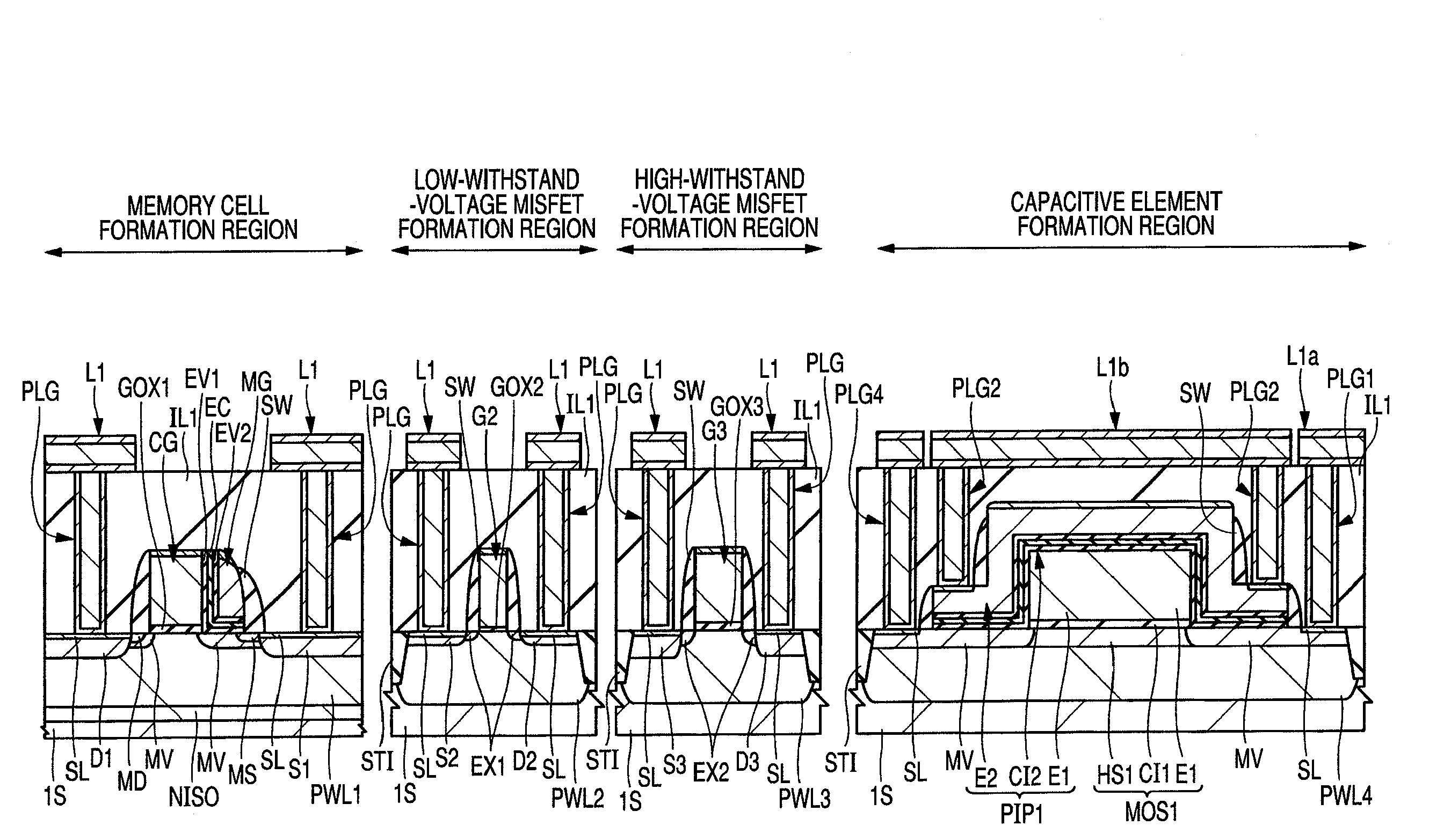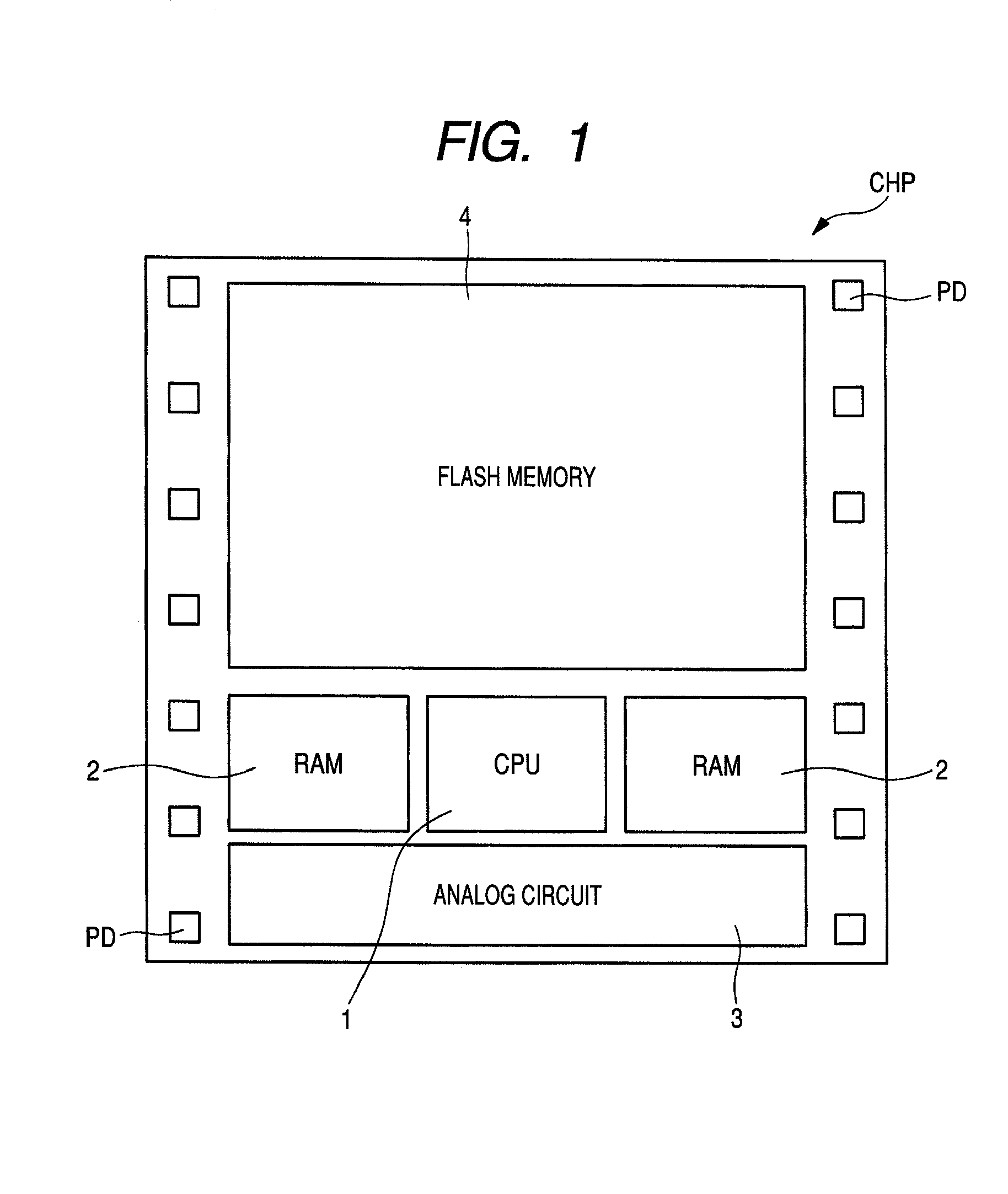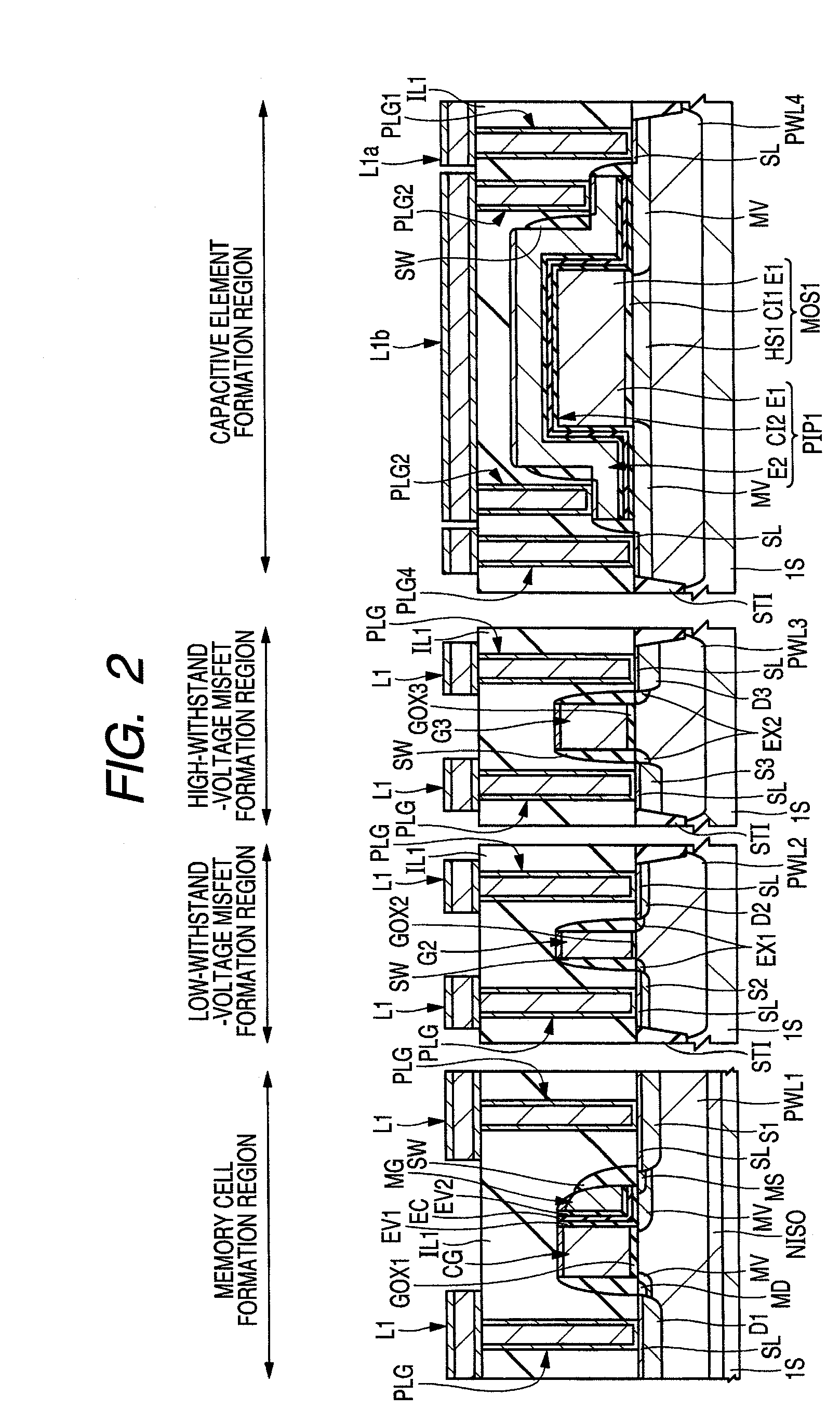Semiconductor device and a method of manufacturing the same
a semiconductor and capacitor technology, applied in semiconductor devices, capacitors, electrical equipment, etc., can solve the problems of withstand voltage failure between the upper electrode and the lower electrode of the mos capacitor, pin hole defect tends to occur in the capacitor, etc., and achieve the effect of reducing the defect fraction
- Summary
- Abstract
- Description
- Claims
- Application Information
AI Technical Summary
Benefits of technology
Problems solved by technology
Method used
Image
Examples
first embodiment
[0059](First embodiment) FIG. 1, for example, is a plan view showing a semiconductor chip (semiconductor substrate) CHP that forms a microcomputer, and a diagram showing a layout configuration of each element formed in the semiconductor chip CHP. In FIG. 1, the semiconductor chip CHP has a CPU (Central Processing Unit) 1, a RAM (Random Access Memory) 2, an analog circuit 3, and a flash memory 4. Then, on the periphery of the semiconductor chip, pads PD that are input / output external terminals to couple these circuits and external circuits are formed.
[0060]The CPU (circuit) 1 is also called a central processing unit and plays an important role as the heart of a computer etc. The CPU 1 reads and decodes a command from a storage device and performs a variety of operations and controls based thereon and high-speed of processing is required. Consequently, a MISFET (Metal Insulator Semiconductor Field Effect Transistor) constituting the CPU 1 requires a relatively larger current drive for...
second embodiment
[0188]FIG. 25 is a plan view showing a connection configuration of capacitive elements in the On the left-hand side in FIG. 25, a first capacitance formation region is formed and on the right-hand side in FIG. 25, a second capacitance formation region is formed. In the first capacitance formation region formed on the left-hand side in FIG. 25, a capacitive element having a laminated structure of the MOS capacitor MOS1 and the polysilicon capacitor PIP1 is formed. Although an n-type well, which is the lower electrode of the MOS capacitor MOS1, is not seen, the n-type semiconductor region MV formed in this n-type well is shown schematically. On the other hand, in the second capacitance formation region formed on the right-hand side in FIG. 25, a capacitive element having a laminated structure of the MOS capacitor MOS2 and the polysilicon capacitor PIP2 is formed. Although a p-type well, which is the lower electrode of the MOS capacitor MOS2, is not seen, a p-type semiconductor region...
third embodiment
[0207](Third embodiment) The third embodiment is the same as the above-described second embodiment in that an n-type well with a low concentration is used as the lower electrode of the MOS capacitor MOS1 and a p-type well with a low concentration is used as the lower electrode of the MOS capacitor MOS2, however, differs from the second embodiment in the configuration of a drawn region drawn from the respective lower electrodes.
[0208]FIG. 32 is a plan view showing a connection configuration of capacitive elements in the third embodiment. On the left-hand side in FIG. 32, a first capacitance formation region is formed and on the right-hand side in FIG. 32, a second capacitance formation region is formed. In the first capacitance formation region formed on the left-hand side in FIG. 32, a capacitive element having a laminated structure of the MOS capacitor MOS1 and the polysilicon capacitor PIP1 is formed. Although an n-type well, which is the lower electrode of the MOS capacitor MOS1,...
PUM
 Login to View More
Login to View More Abstract
Description
Claims
Application Information
 Login to View More
Login to View More - R&D
- Intellectual Property
- Life Sciences
- Materials
- Tech Scout
- Unparalleled Data Quality
- Higher Quality Content
- 60% Fewer Hallucinations
Browse by: Latest US Patents, China's latest patents, Technical Efficacy Thesaurus, Application Domain, Technology Topic, Popular Technical Reports.
© 2025 PatSnap. All rights reserved.Legal|Privacy policy|Modern Slavery Act Transparency Statement|Sitemap|About US| Contact US: help@patsnap.com



